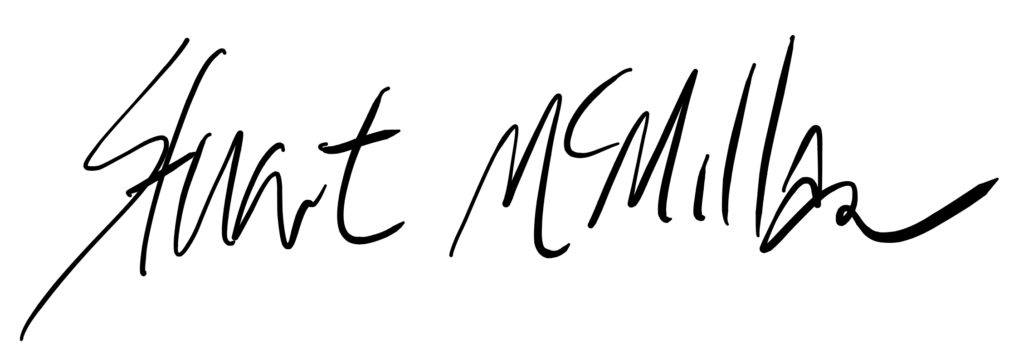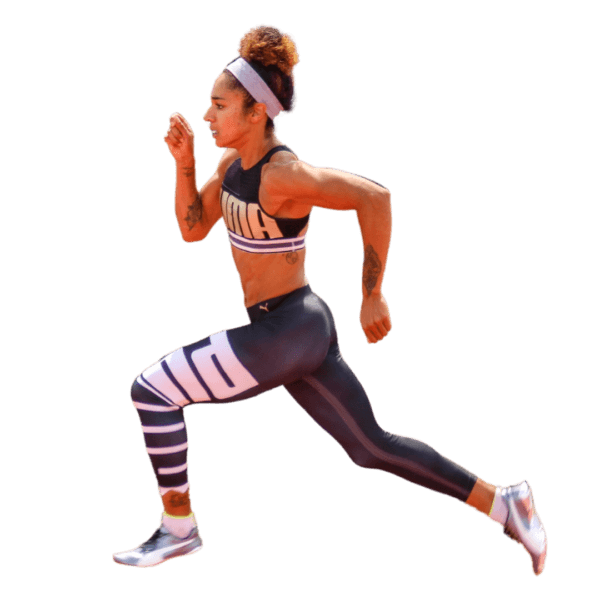Jodie Williams is smarter than me.
As hard as it is for me to admit that, it is true.
Anaso Jobodwana is also smarter than me. So is Lolo Jones. And Kaillie Humphries. And Ameer Webb. Andre De Grasse. Steve Mesler. Christian Malcolm. Glenn Smith. And a few hundred other folk who have had the (dis?)pleasure of my coaching company over the last 25 or so years.
I think for the most part I fooled them all … but it’s all just smoke and mirrors, really.
I’m a sham.
A pretender.
I’ve just pretended to know what’s best for them. All the time afraid that they would find out the truth.
I may come across like I know better.
… that I have a plan.
A periodized plan even!
But … I don’t
All I really have is a guess.
Based on what they tell me … what I see … what I know … what I think I know … and what I think.
I have a lot of information available to me when it comes to coaching each athlete
But the only piece that really matters — I do not have:
“How does the athlete feel”?
I can ask. I can monitor. I can devise elaborate questionnaires. I can even use the latest and greatest technology – HRV, TMG, GPS, etc…
But all it will give me is a picture of how the athlete might feel.
“The athlete can feel, but cannot see. The coach can see, but cannot feel”
And that pretty much sums it up.
If a coach cannot feel what the athlete feels, then how can we accurately predict how she is going to adapt? How can we pretend we know more than the athlete?
Well – we can’t!
… or at least I can’t.
So until that magical, mystical day when I can transpose myself into the athletes’ being, and feel what they can feel, I will just …
guess
But, actually — to make myself feel a little smarter, I will call it a ‘hypothesis’.
You remember the grade-school definition of a hypothesis?
“an educated guess”
Not just pulled out of thin air, my hypothesis is based upon research, the athlete’s past experience, my past experience, the experience of my friends and colleagues, the experience of former athletes, data analysis and on-going monitoring, etc.
All this comes together to inform the narrative which drives my hypothesis — my guess of how the athlete will adapt to the load that I place upon them.
Then – based on this hypothesis – I run a trial & error experiment – i.e. the training program.
At the end of the experiment (the training cycle), I use the new information we have gained through these new experiences, and form a new (or updated) hypothesis, and begin the process over again.
What about planning?
I have been guilty in the past of devising these super-elaborate, beautiful-looking plans that I have spent months on – sitting in my basement like some mad scientist. Then, when the time comes to run the program, I feel like I’m so emotionally tied to it, that I have trouble adjusting if things don’t work out the way I expect them to.
We see this all the time:
Excessive emotional commitment to something we have spent a lot of time, money, or energy on can be a huge problem – not only in coaching, but in every profession, and in every part of our lives.
There’s even a name for it:
‘Sunk Cost Fallacy‘
Essentially, it is the irrational commitment to a poor ‘investment’. The more you’re invested, the more difficult it is to abandon it. Read Kahneman’s Thinking Fast and Slow and Ariely’s Predictably Irrational for great insight into loss aversion and sunken costs.
“Sunk costs drive wars, push up prices in auctions and keep failed political policies alive. The fallacy makes you finish the meal when you are already full. It fills your home with things you no longer want or use.
Every garage sale is a funeral for someone’s sunk costs”.
– David McRaney
This can be a difficult thing to admit to.
It’s basically admitting to our potential fallibility.
It’s one thing to admit to a mistake that you have already made; it’s another thing altogether to admit to a mistake that you have yet to make!
Doubly-difficult for the oversized ego!
But somehow, that’s what I have managed — I think!
About 15 years ago, I began to write my programs a little differently. Instead of detailed planning – often months in advance – I began to prescribe broad ranges, varied exercise options, loading alternatives, etc.
In fact – just today, I pretty much scrapped a ‘planned’ session.
I had planned 3-5 x 90m sprint-float-sprint – 30-30-30 – with one of the male sprinters in my group. He had a pretty decent warm-up, was looking good on his warm-up accels in spikes, and I had no reason to not think that we would be running with Plan A today!
But then he did his first rep!
If he is running these well, he will roll through the 90 in about 9flat.
Today?
Well – let’s just say it wasn’t quite 9flat!!
Everything that I knew said that he would have a great session today. We came off a rest-week (he had both Saturday and Sunday this past weekend off), he had been running this type of session well over the past few weeks, and he warmed up well!
But the first rep was terrible!
So, after a conversation, we scrapped it – and rolled with plan B!
“It is not unscientific to make a guess, although many people who are not in science think it is … in general, we look for a new law by the following process: first we guess it. Then we compute the consequences of the guess to see what, if this is right, if this law that we guessed is right, to see what it would imply. And then we compare the computation results to nature, or we say compare to experiment or experience, compare it directly with observations to see if it works.
If it disagrees with experiment, it’s wrong.
In that simple statement is the key to science. It doesn’t make any difference how beautiful your guess is, it doesn’t make any difference how smart you are, who made the guess, or what his name is. If it disagrees with experiment, it’s wrong.
That’s all there is to it.”
– Richard Feynman

Some Structure
But there is still some organization to this process.
Here is how I approach things (credit to Mladen Jovanovic for the inspiration for the ‘zoom levels’):
Philosophy
This is mine. It is not influenced by any single individual athlete I may be coaching. It is based on my experiences. My knowledge. This is where I am ‘smarter’ than the athlete. I may modify my training philosophy slightly over time and circumstance — but on the whole, it is pretty fixed (this is slightly different for younger coaches – as they may not yet have the experience and expertise to adhere to a ‘philosophy’. And we must ensure that we differentiate between a training philosophy and training dogma, but this is a another topic for another day!)
Plan
Again, this is mainly influenced by me, and is based primarily upon my experiences. The plan is essentially the component-parts of the program – the types of runs, the types of weight-lifting exercises, the types of jumps, etc. On the hole, for 90% of the athletes, 90% of the time, this is determined by me. But there is room here for athlete-influence.
For example, I have an athlete who has a horrible past experience with the Olympic lifts. So while ‘Olympic lifts’ are generally a part of my plan, this athlete’s prior experience influences their suitability, so I program alternative exercises. Similarly, I tend to prefer single-leg squats to bilateral squats, but I have had many athletes that draw a tight emotional connection between their back squat and their speed, and if I don’t respect this fact, then I might be leaving some speed on the table.
Periodization
This is the way in which we organize the component-parts: and it will be further influenced by the athlete – especially in cases where they may have school, work commitments, etc.
I generally run a complex heirarchy – where we train multiple abilities simultaneously. That doesn’t really change – but what might change is how we organize the structure of cycles over time. Whether we employ a 2:1 load:unload structure, or a 3:1, or a 2:2, etc. has as much to do with what the athlete has going on in their lives as it does with my own personal biases – so it is important I don’t become overly dogmatic here.
Athletes have different loading-adapting capabilities, so we may have to organize schemes differently to fit their specific abilities and schedules, etc.
Program
This is what the athlete does on any given day. And this is where the athlete becomes smarter than me.
Much smarter.
The pendulum that swings between the coach and the athlete finally swings all the way across. It’s time for the coach to step out of the way, and allow the athlete to express whatever it is they are capable of on that particular day.
It is not a free-for-all, however.
But as long as the training adheres to the philosophy, the plan, and the periodization, then the athlete kinda runs the show.
Auto-regulation to the maximum.
While keeping within the main structure, we take advantage of the day-to-day fluctuations, that we cannot predict by remaining super-fluid with our daily programming (what Mel Siff called ‘cyber-kinetic periodization‘).
I will expand upon this in the coming weeks – and stay tuned, as I will also share a recent presentation I gave on this topic.


